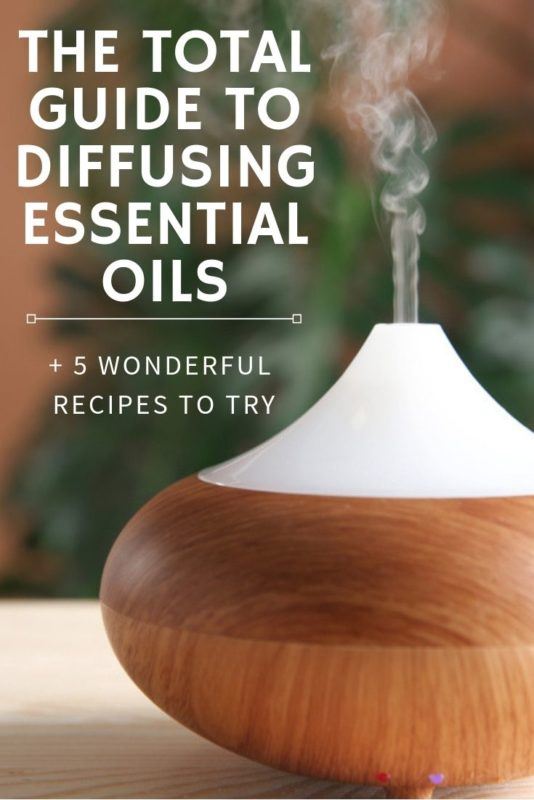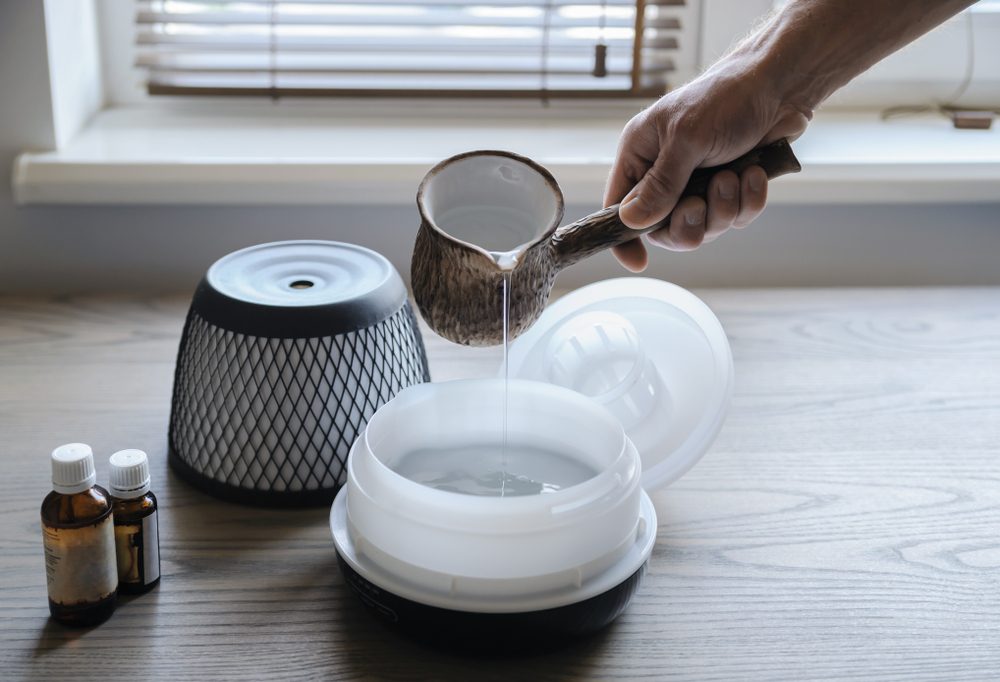
An aromatherapy diffuser is a popular way of using aromatherapy. However, there are several different types of diffusers on the market, each with their own advantages and disadvantages. And there are also some safety considerations for diffusing essential oils, depending upon where you are diffusing essential oils and who is present.
This article is a quick introduction to the most popular types of diffusers, some of the issues associated with them, and you’ll find a few easy recipes to try at the end, formulated by a certified aromatherapist.
Basic Aromatherapy Diffusers
Not so long ago, the most basic type of aromatherapy diffuser was a candle diffuser.
These types of diffusers consisted of ceramic type trays/holders, with a space underneath to place a small tealight candle. You filled the top tray up with water and added a few drops of your favorite essential oil. The heat from the candle warmed up the water and diffused the aroma of the essential oils into the room.
There were a few problems with this type of diffuser.
The tray often ran dry of water and burned up the essential oils. Oils and water don’t naturally mix so the essential oils tended to sit on top of the water. And there was also the safety aspect of an open flame, especially if you had pets or little ones in your home.
You can still find these types of aromatherapy diffusers – like this one available on Amazon.
I recommend purchasing one of the more common electric aromatherapy diffusers if you want to use it for more therapeutic purposes vs. aesthetic purposes.
Ultrasonic Electric Aromatherapy Diffusers
An ultrasonic electric aromatherapy diffuser is probably the safest type of diffuser available. You add the essential oils (or the essential oil blend) to a glass container.
Each type differs, so refer to the manufacturer’s instructions for specific details on how to do this. Once you switch it on, the diffuser pushes out all of the different-sized essential oil molecules into the air.
Some electric diffusers have lights as well to add to the ambience. You can also set a time for the diffuser to run, so that you don’t forget about it, or set it for a certain time to fall asleep to.
Try this highly reviewed InnoGear diffuser available on Amazon here.
Nebulizing Aromatherapy Diffusers
A nebulizing aromatherapy diffuser is probably the “premium” of aromatherapy diffusers and is most favored by clinical aromatherapists for therapeutic use.
This type of diffuser turns the essential oil molecules into micro-sized units, unlike the standard electric diffuser.
It forces air into the essential oils, through an air pump. The result is a fine vapor mist of micro-sized molecules. The essential oil blend is dispersed more readily into the air and it is advantageous for conditions such as asthma, bronchitis, coughs and colds.
This premium diffuser is really sylish and would look great when diffusing or not.
Aromatherapy Diffusers On-the-go
Some aromatherapy diffusers are portable and small enough to take with you on-the-go. Their effectiveness might be limited (when compared to a nebulizing diffuser, for example) but it is worth giving them a try, especially if you are always moving around.
Cars:
A traditional plug-in car diffuser works from the cigarette lighter outlet. Add a couple of drops of your chosen essential oil to one of the pads (supplied with the diffuser) and plug it into the outlet to diffuse the essential oils.
Available on Amazon here.
Another type of car diffuser is the “cupholder” diffuser. Essentially, this is a portable size diffuser that fits into the cupholder of your car and acts much like a mini version of a regular diffuser. It is powered by the socket in your car.
Available on Amazon here.
Caution: Do not diffuse relaxing essential oil blends while driving which may cause sleepiness or impair judgment.
In addition, take into consideration your passengers – especially babies, children, pets, pregnant women, and/or seniors – and do not diffuse contra-indicated essential oils around them.
Jewelry:
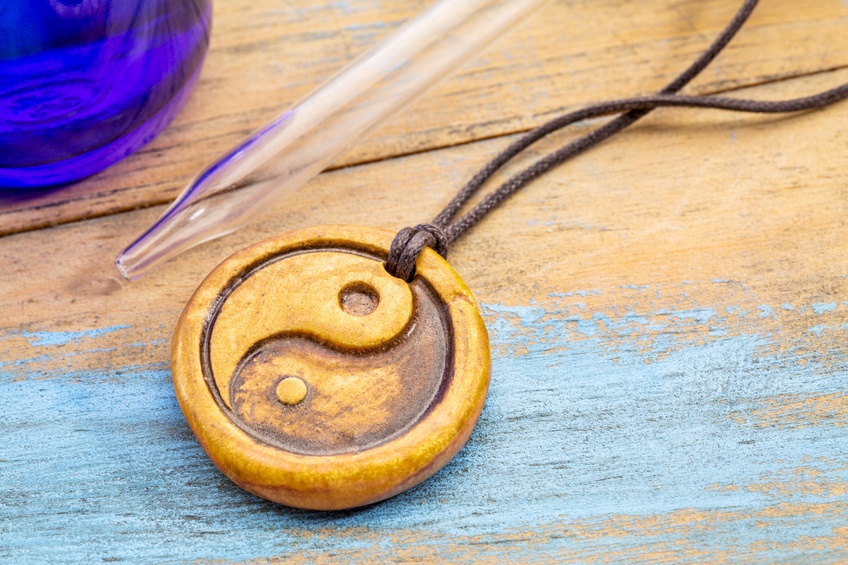
There are many different types of jewelry pendants, necklaces, and bracelets which incorporate some type of aromatherapy “diffusion.” Many include a small disc or bead that is used to “disperse” the essential oils.
Jewelry designers are getting more creative in how to add an aromatherapy element to their pieces, so check each one out, ask questions, and make sure you know how it works before purchasing it.
There’s a wide selection available on Amazon.
Computer:
Diffusing aromatherapy via your computer uses the same type of technology that is used through USB ports in cars.
Simply plug in the USB to disperse the essential oil aroma. The design of the diffuser to disperse the essential oils varies.
We like the look of this one here.
Where To Use Aromatherapy Diffusers
Aromatherapy diffusers can be used in many places. These are some of the most popular places in which aromatherapy diffusers are used. Make sure to check the cautions section which follows as well:
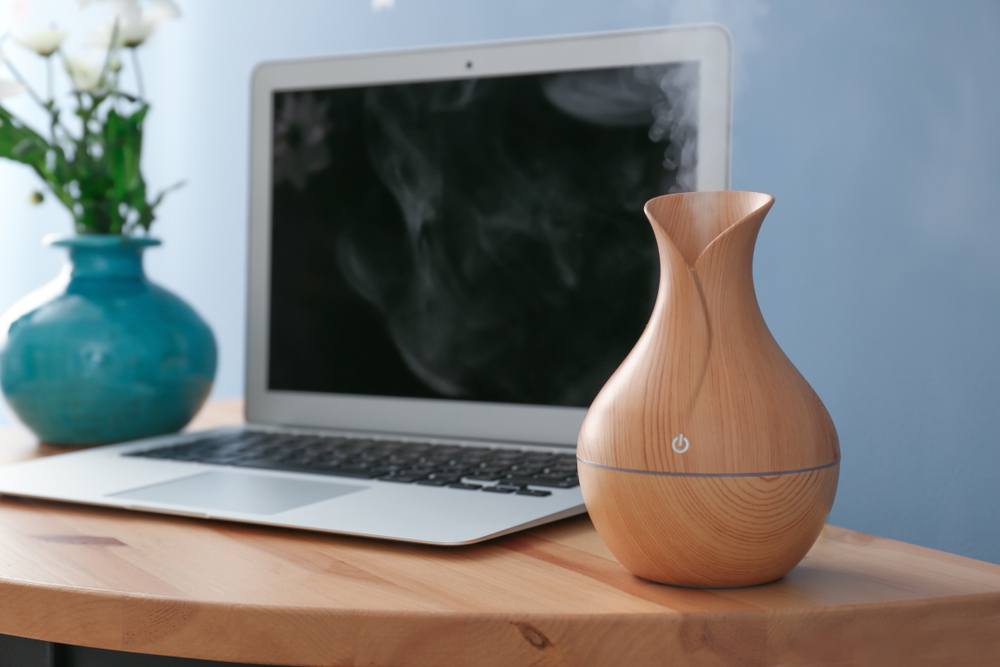
- In the home
- In the office
- In the car
- In hospital waiting rooms, doctor waiting rooms, therapist waiting rooms (and practice)
- At weddings
- At social events and parties
- In schools (see caution note below)
- In yoga studios
- In restaurants
- In public areas.
Cautions For Diffusing Essential Oils
There are always ethical and health reasons when diffusing in a public place. You don’t know the individual health issues of a particular person.
You don’t know about any allergies. And some people may have other reasons for not being around essential oils.
Always ask before diffusing and obtain permission from a responsible adult (where children and the incapacitated are concerned). Little ones can’t tolerate essential oils for long periods of time, or in the same way as adults. This makes it especially difficult to diffuse essential oils in schools, without the advice of a certified aromatherapist on how to do so.
Follow the general guidelines for diffusing essential blends, in addition to specific contra-indications for use of a particular essential oil.
Vulnerable groups to consider include:
Babies and children:
This age group cannot tolerate certain essential oils and those which they can tolerate are at a much lower dilution rate than a normal adult. Essential oils such as peppermint (Mentha × piperita), cornmint (Mentha arvensis), and sage (Salvia officinalis) are a few examples of essential oils never to use with and around babies and children, without causing serious harm.
In Pregnancy:
Moms-to-be cannot tolerate essential oils at the same dilution rate as a normal adult. In addition, just like with babies and children, you should never use some essential oils around pregnant women, due to possible harm, or in extreme cases emmenagogue effects, to both mother and child.
Pets:
Any type of pet in the home needs to be considered before diffusing essential oils. Cats in particular can have extreme adverse reactions to essential oil use. Keep all pets away from essential oils and don’t diffuse in a space that a pet is confined to.
Seniors:
Diffusing essential oils around seniors requires special attention, much like with other vulnerable groups. Seniors cannot tolerate the same level of essential oil diffusion as a regular adult.
Serious Medical Conditions & Allergies:
Anyone who has had recent surgery, has a serious medical condition or suffers from allergies may not tolerate essential oil diffusion at the same level as a normal adult – or even at all.
General Guidelines For Diffusing Essential Oils
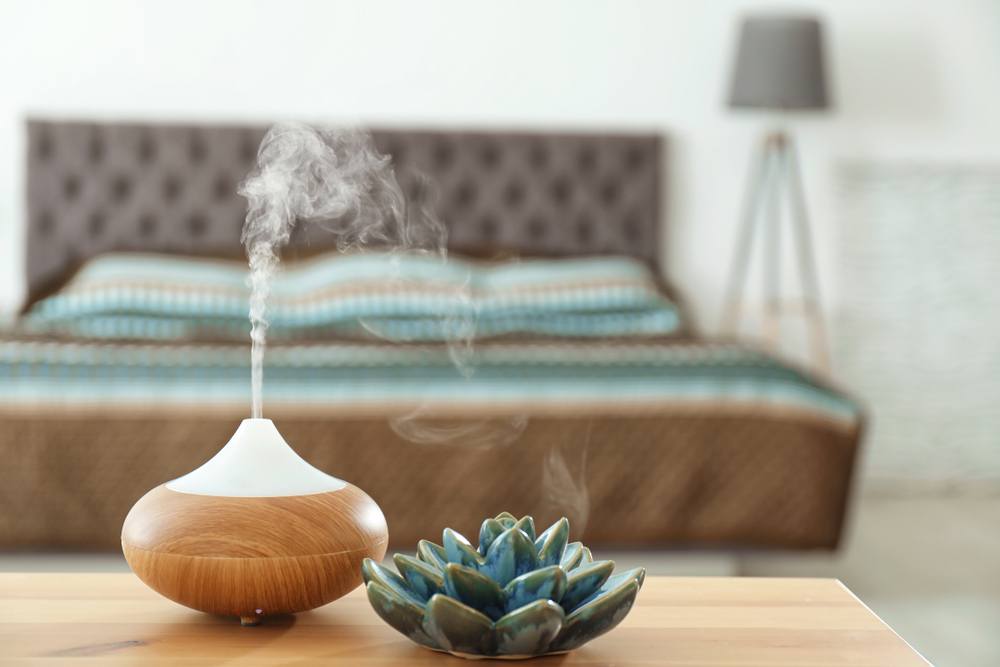
These are a few general guidelines for diffusing essential oils, but other factors (such as those above) should also be considered:
- Diffuse in a well-ventilated space.
- The size of your diffuser will dictate how much square footage the diffusion will cover.
- Use relaxing essential oils only when your judgement of other tasks won’t be impaired e.g. Driving, operating machinery, cooking etc.
- Use stimulating essential oils for situations such as study and work, not at bed time.
- Diffuse for short periods of time. Diffusers should not be run for hours on end.
- Stop using immediately if health issues arise.
Essential Oil Diffusion Blend Recipes
Each of the following recipes makes up approximately 2 – 3 mL of essential oil blend. You will need a glass bottle with an orifice reducer to mix the blend in – you can purchase these on Amazon here.
Add the amount of each essential oil to the glass bottle as directed below. Cap and shake well. Use the orifice reducer to add about five drops of the essential oil blend (normal adult use) to the diffuser.
However, always refer to individual manufacturer’s guidelines for specific amounts as the size of diffusers vary widely, and this will dictate to amount to use.
Pay attention to cautions for use, and differing uses for vulnerable groups.
1. Relaxing Essential Oil Diffusion Blend For Bedtime
- 40 drops Lavender (Lavandula angustifolia)
- 25 drops Roman chamomile (Chamaemelum nobile)
- 35 drops Sweet orange (Citrus sinensis)
2. Stimulating Essential Oil Diffusion Blend For Study
- 20 drops Rosemary (Rosmarinus officinalis ct. linalool)
- 25 drops Peppermint (Mentha × piperita)
- 20 drops Clary sage (Salvia sclarea)
- 35 drops Lemon (Citrus × limon)
Cautions: Avoid use in pregnancy, with and around babies and young children, with high blood pressure, and with epilepsy.
3. Calming Essential Oil Diffusion Blend For Shock and Grief
- 30 drops Ylang ylang (Cananga odorata)
- 25 drops Mandarin (Citrus reticulata)
- 45 drops Petitgrain (Citrus aurantium var. amara (fol))
Cautions: Overexposure may cause headaches and mild nausea.
4. Essential Oil Diffusion Blend For Allergies
- 30 drops Blue gum eucalyptus (Eucalyptus globulus)
- 25 drops Lemon (Citrus × limon)
- 20 drops Scotch pine (Pinus sylvestris)
- 25 drops Lavender (Lavandula angustifolia)
Cautions: Avoid use with babies and children. For a more child-friendly blend, remove blue gum eucalyptus essential oil and replace with Roman chamomile (Chamaemelum nobile). However, still check usual cautions for use with children.
5. Luxury Essential Oil Diffusion Blend For Romance
- 20 drops Rose (Rosa × centifolia)
- 30 drops Geranium (Pelargonium graveolens)
- 35 drops Frankincense (Boswellia carteri)
Pin This To Save For Later
